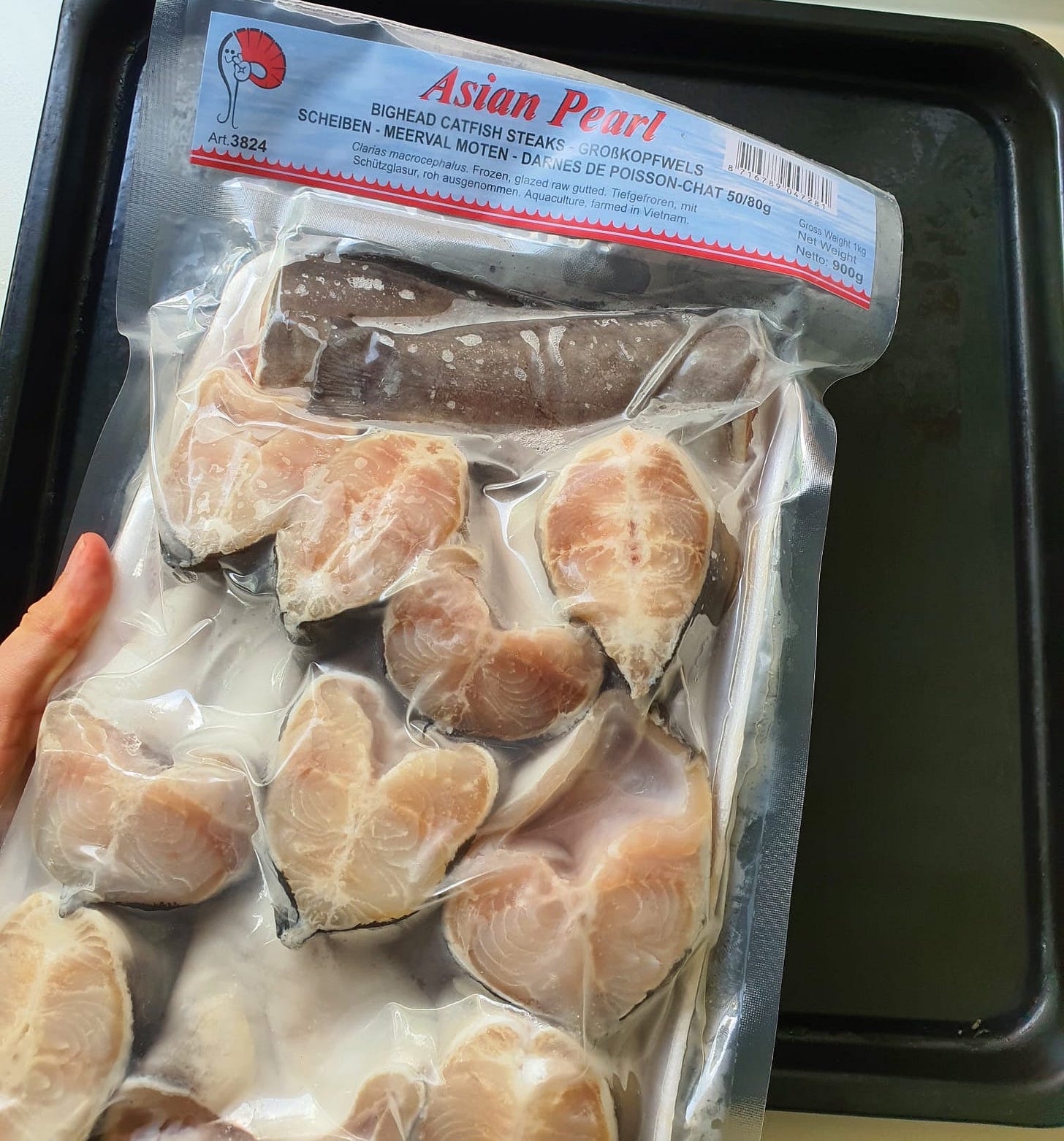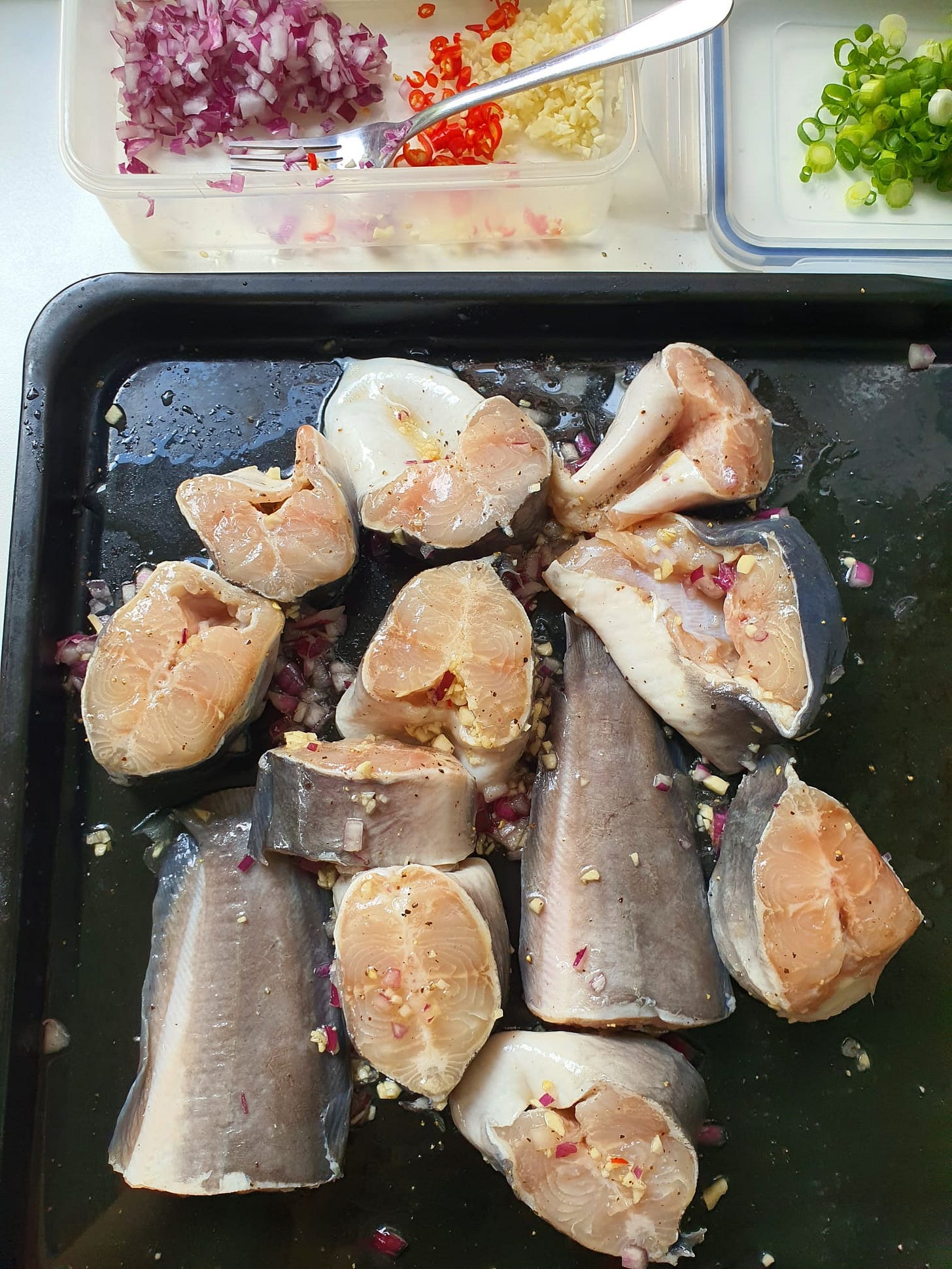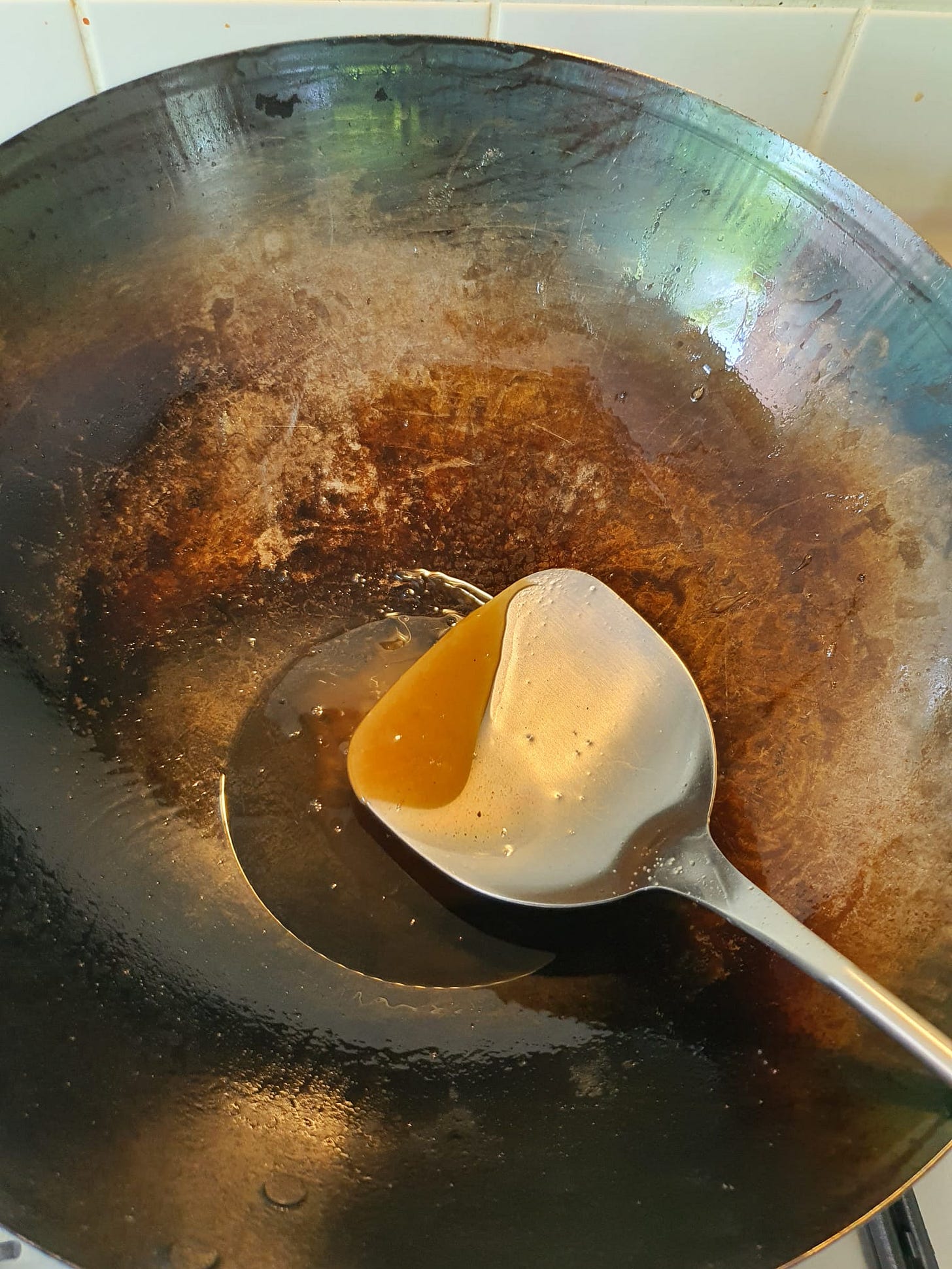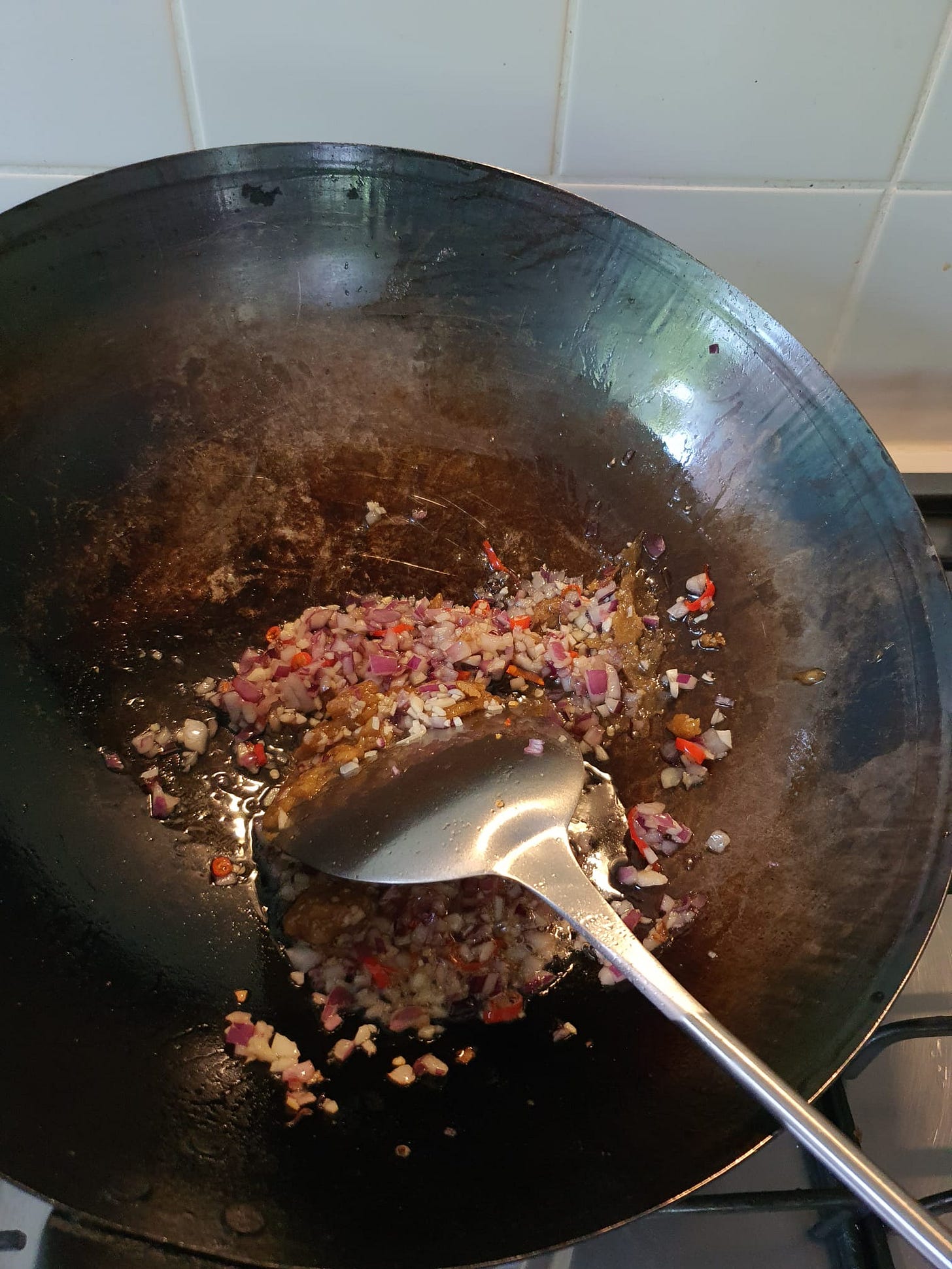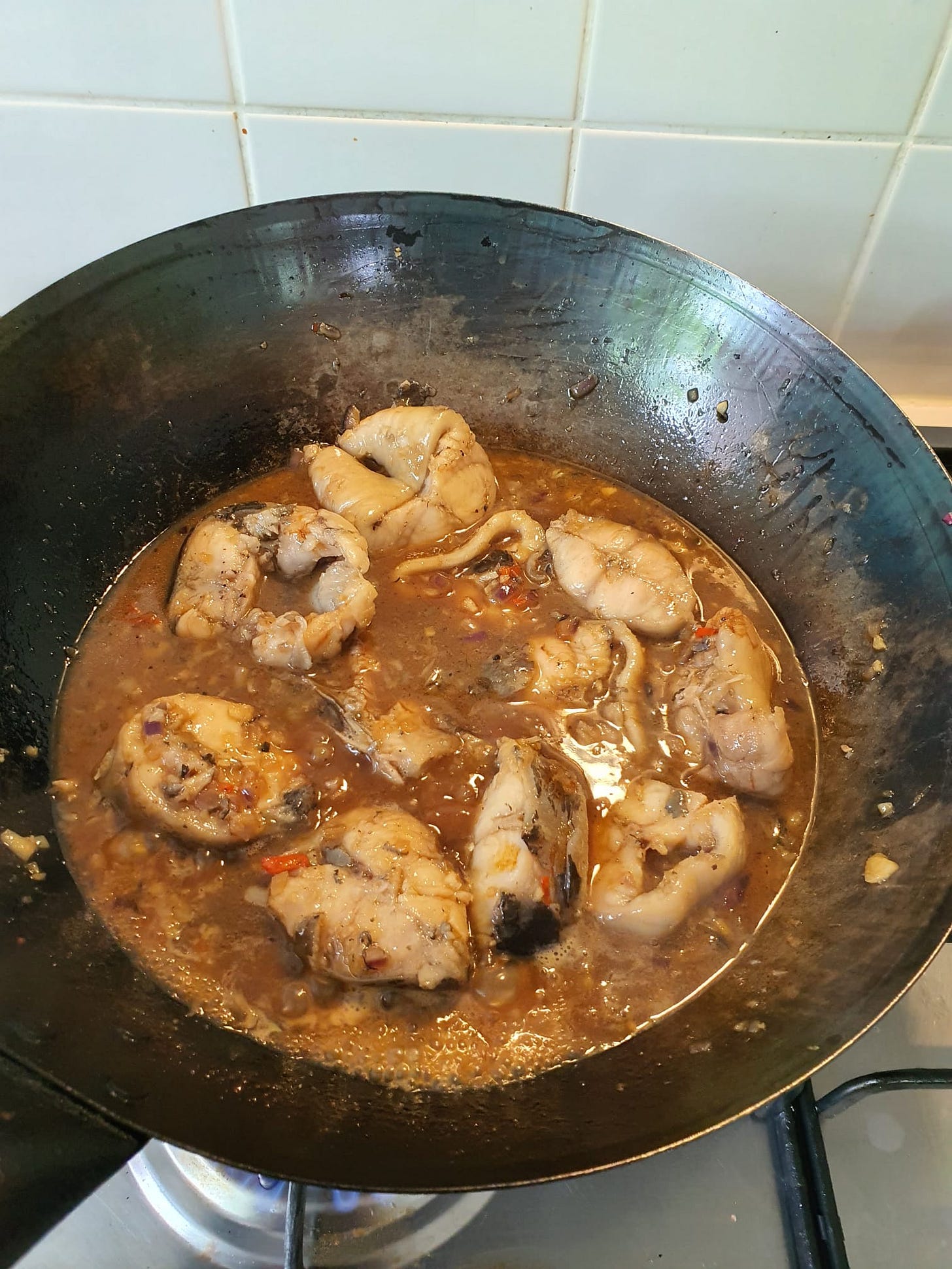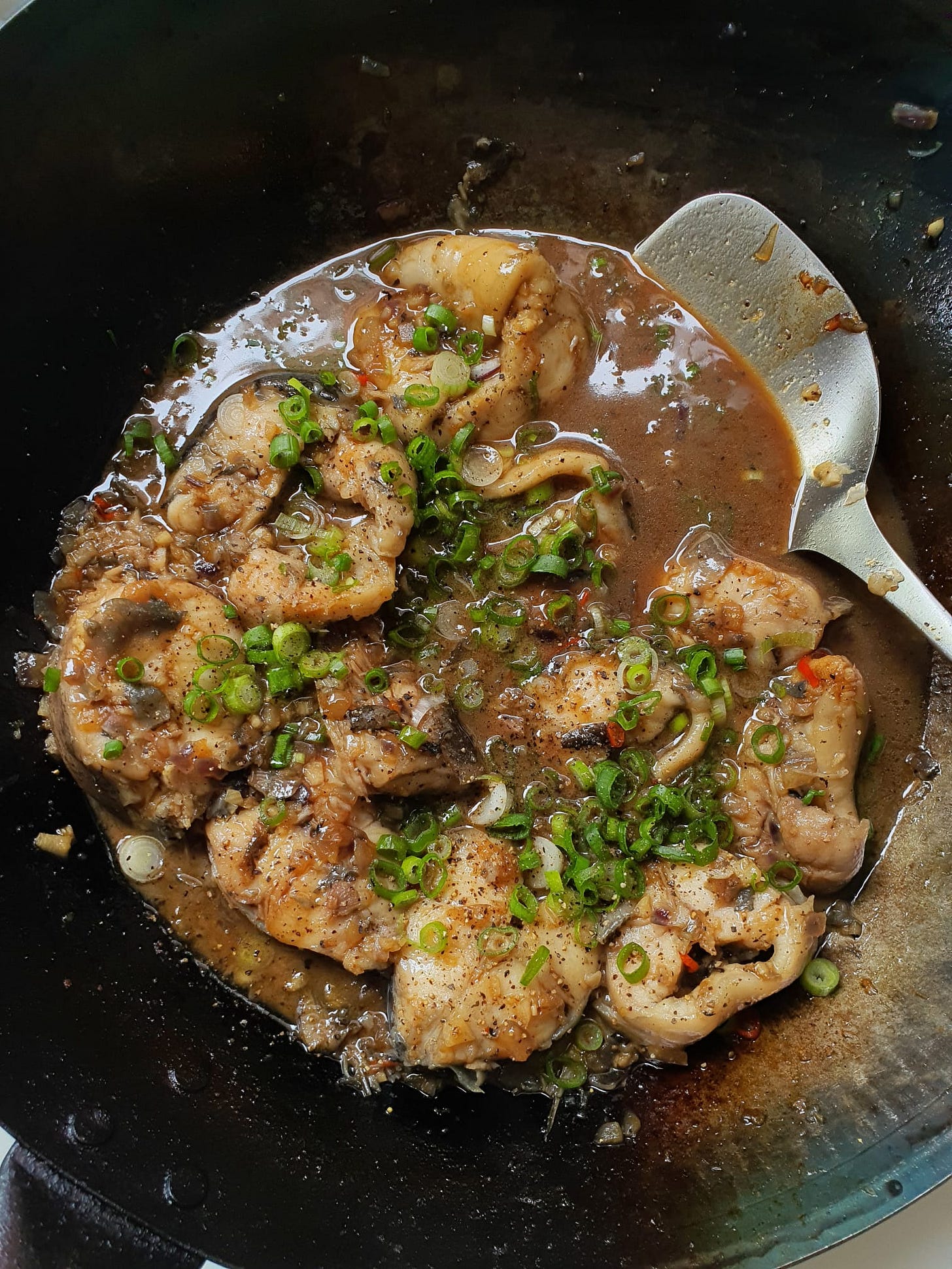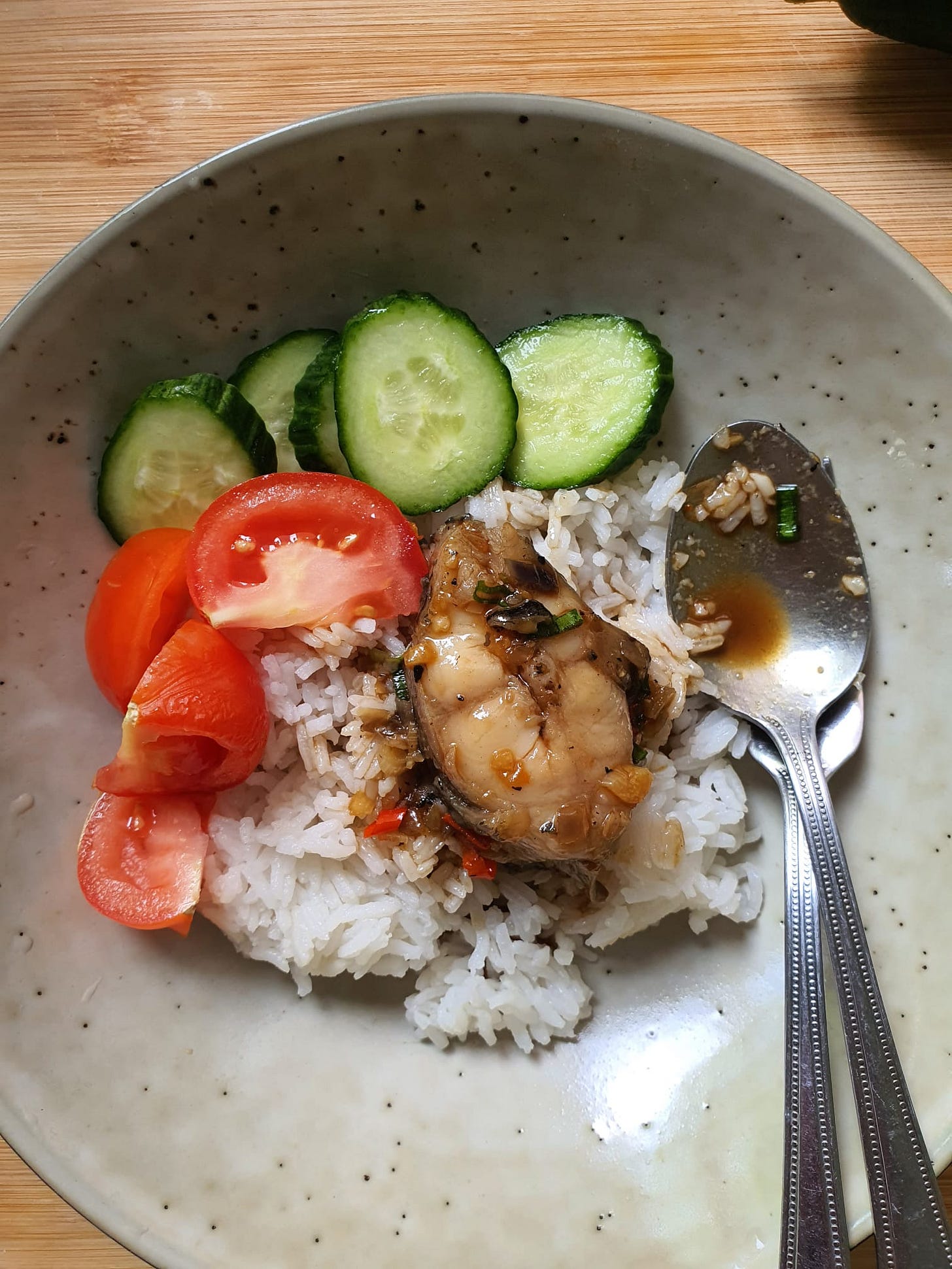Vietnamese braised claypot fish
On occasion, I get personal on this newsletter. I’ve never seen it as the type of food newsletter where it’s an impersonal sharing about the cooking and the recipes, because stories and food tend to be inextricable. But also, I think it’s nice to be able to share a connection with you as the human behind Singapore Noodles.
It is the middle of 2023, the year I turn 32. People say that drastic life changes happen when your age ends with a 9. That was certainly true for me - at the age of 29, I had a what-the-hell-am-I-doing-with-my-life moment. We packed our bags, moved out of the vibrant city of Melbourne, and began living in a small town called Daylesford. I made the decision to leave the life of restaurant kitchens, started Singapore Noodles, and focused on other ways to make a living - speaking gigs, recipe development, videography, photography, recipe testing, writing etc.
From age 30 onwards, life has been strange. I’m still feeling my way around this new decade. It is as though an invisible switch flicks on when you turn 30. One friend talked about how her priority has now shifted to having less risk and more security as she contemplated having children. Another - someone whom I thought was perfectly content in her non-corporate career - told me that she was planning on leaving her job because she was earning far less than her peers. I never imagined her to be the type to care about money, just as how I never thought of myself to be the type. But this year I found myself tender about many things.
On my trip to Singapore in March, I found myself pouring my soul out to an aunt who recognised that I was 自卑, or struggling with feelings of inferiority. Things said over dinner that weren’t even meant to hurt caused me to burst into tears on two occasions, something which shocked everyone - if you grew up in an Asian household, you know how uncommon these things are. The night culminated in a relative giving me a bear hug at the end of the night and telling me, “Remember, you’re special.” which of course made me tear up even more.
But I couldn’t shake the feeling of not living up to my potential, like a compressed spring that could find no release. While my books Wet Market to Table and Plantasia synergize what I love doing and what I’m good at, they don’t pay the bills and I am still finding my way.
Early in my writing career when artists of all stripes told me that they don’t do what they do for money, it sounded like such a privileged thing to say. But now, it’s becoming abundantly clear that these words weren’t spoken from a position of being out-of-touch, but precisely from being in touch with the way things simply are. For most of us, a living can’t be made off writing books or creating art, and so, the true expectation of reward lies in the sweetness of producing work that we are proud of and putting it out there. We hope to make enough to continue doing it; anything else is a bonus.
While I’m thankful to not be in the situation where I’m living paycheck to paycheck, there have been moments where my insecurities seep in, especially as the gulf between my husband’s earning potential and my own widens. Or that between myself and the friends that I used to go to school with. And I hate that I care. I hate that I care if not splitting the bills evenly with my spouse makes me any less of an independent woman or responsible teammate. If I’ve squandered my advantage of doing well in school and made the wrong choice.
A benefit of being an expat in the Netherlands is that I’m privy to free career coaching sessions. My coach, a sweet Italian lady who is doing these sessions pro bono, guided me through a visualisation activity. She explained that I would spend time with who she called my own “inner leader” - the embodiment of the wisdom, compassion, clarity, and courage that I carry within me. The point is to be attentive to the message from a voice that is often silenced or suppressed. When we first e-met, I told her about my own prejudice against feel-good or woo woo-type exercises, but she encouraged me to set aside my own prejudice and to fully embrace the experience.
We turned off our cameras for my comfort and I was told to picture myself in a safe space in vivid detail… then to picture my leader walking towards me, and us sharing a conversation. This is the embodiment of your inner wisdom, courage, clarity, and compassion, someone who only wants good for you, she told me.
Initially, I had imagined this to be a shrewd figure who would come in with actionable strategies and practical steps on how I could optimally steer my life, like an Ali Abdaal or Simon Sinek-type figure. But the person who stepped into the frame was instead the domestic helper who had raised me and was like a mother figure to me. I blinked and tried to think of someone else, because a scab had not formed over her departure from my life despite the decade that has elapsed, and I didn’t want to cry. But the image was clear. As we sat together in the light-filled study room of my old home, there were no words exchanged between us, only a feeling of complete acceptance and love. There it was, the gift. In that moment, there was nothing left to prove or justify, just be.
Because Wex is in France on a work trip, meals have been simple over here. I typically batchcook something and eat it across two or three days. I was at the Asian supermarket and came across frozen catfish, which I’ve always been intrigued by:
The fish has quite a storied history. From the 16th to 19th century, the Atlantic slave trade brought millions of West Africans to the Americas to work on plantations. As fish is a big part of West African food culture, the immigrants often went fishing to augment the meagre rations that they received from the plantation owners. They were pleased to find catfish, a fish that they were familiar with, abundant in the lakes and rivers of the American South.
Coated in cornmeal and deep-fried, the fish would be eaten on the riverbanks where it was caught, sparking a Black American tradition known as fish fry. The popularity of the catfish further increased with the collapse of the cotton farming industry in the 1960s, which saw desperate farmers in Arkansas and Mississippi flooding their fields and raising catfish in the ponds instead. The success of catfish farming made the fish an inexpensive and widely available option in America.
In Vietnamese food culture, catfish is equally beloved, both amongst the locals in Vietnam and Vietnamese refugees who arrived in America, for whom it was an economical choice. The most popular dish that the fish features in is probably cá kho tộ, which translates to braised claypot fish. Due to the French influence on Vietnamese cooking, sugar is caramelised and combined with fish sauce, coconut water, and a host of aromatics to form a strong-tasting sauce.
Catfish is one of the best fishes for braising because it is not prone to overcooking. It also holds its shape extremely well, particularly when bone-in steaks are used. Alternatives to the catfish include firm-fleshed cod or halibut, though these are pricier options. While detractors refuse to eat catfish because it is a bottom-feeder and tends to smack of the waters in which it swims, catfish farmed in freshwater ponds is free of muddy flavour as I soon learnt.
While it is far more common to have caramel made from sugar and water in the West, sugar is often cooked with oil in Asian food cultures - for example when making kamote cue in the Philippines or to lend colour to a braised dish like Chinese red braised pork belly. Once the sugar is browned, chopped aromatics are added:
After a few minutes of sweating the aromatics, the protein is added. In this case, I use catfish steaks, but one could use a combination of cubed pork belly and hard-boiled eggs to make thịt kho. The flavour combination and cooking method lends itself well to a range of proteins - tofu might even work! Coconut water is poured over and the fish is allowed to braise:
Over time, the sauce reduces, thickens, and develops a lip-smacking quality from the collagen in the catfish skin. A very generous crack of pepper and a sprinkling of spring onions over the top and the dish is done:
Traditionally, the dish is meant to be intensely flavoured, rich, and salty, to encourage people to eat more rice in a time when resources were not abundant. Like any braise, it tastes even better on the second day. One downside: the many bones. But if you can get through that, you’ll find that catfish is one of the most texturally satisfying and versatile fish you could cook with.
Cá Kho Tộ
Serves 4




